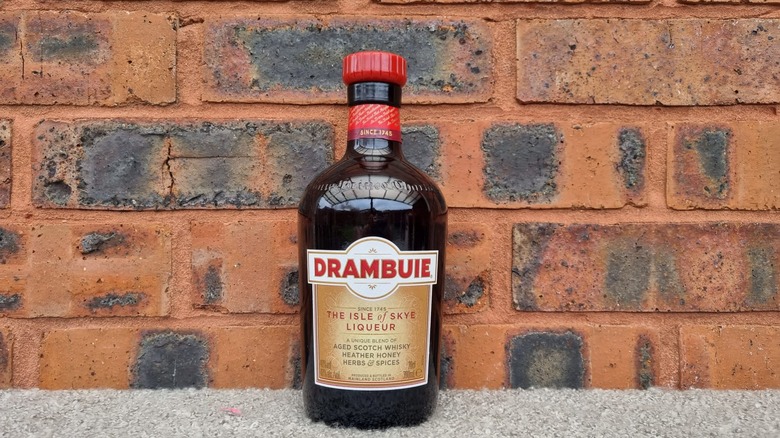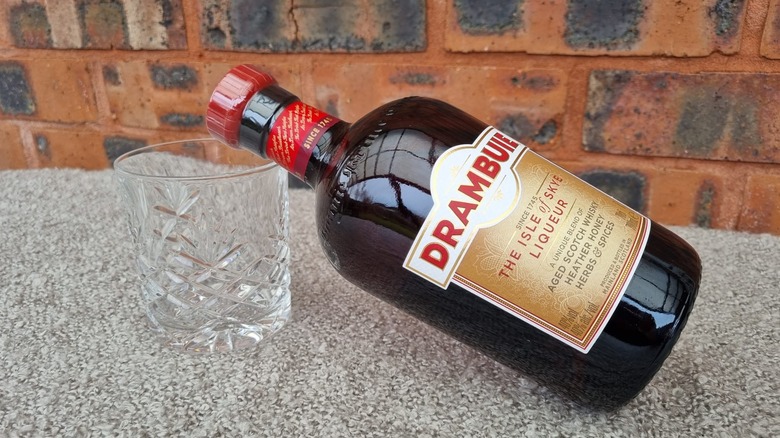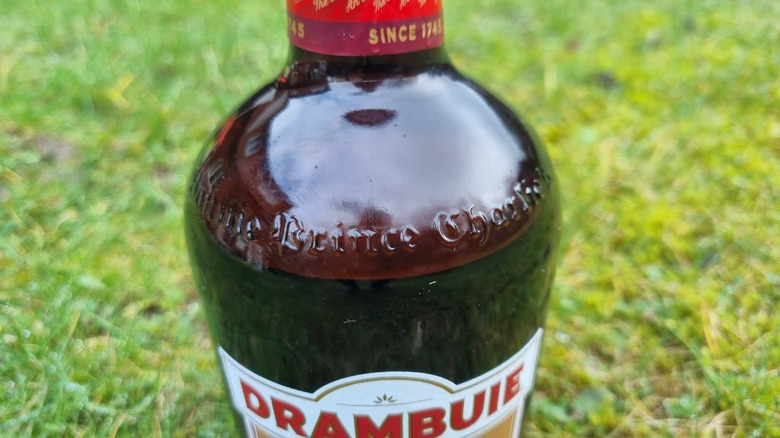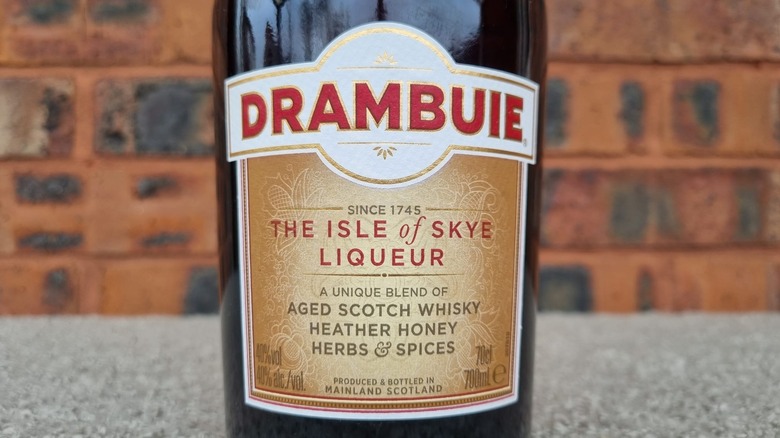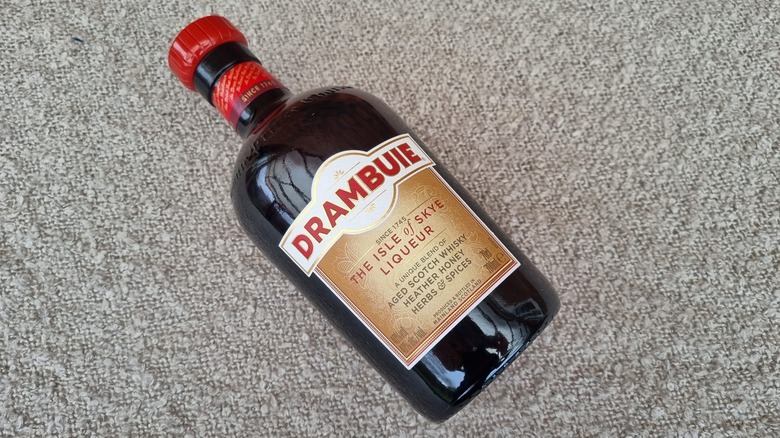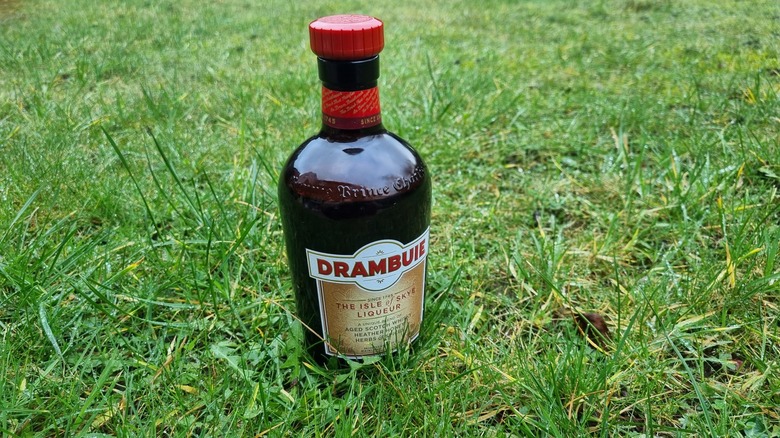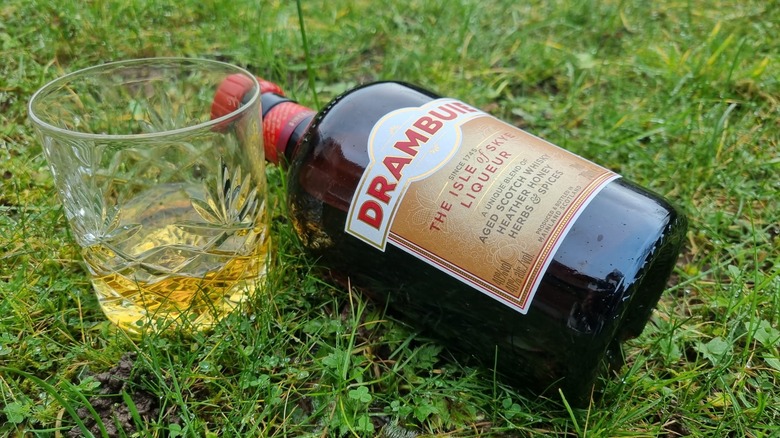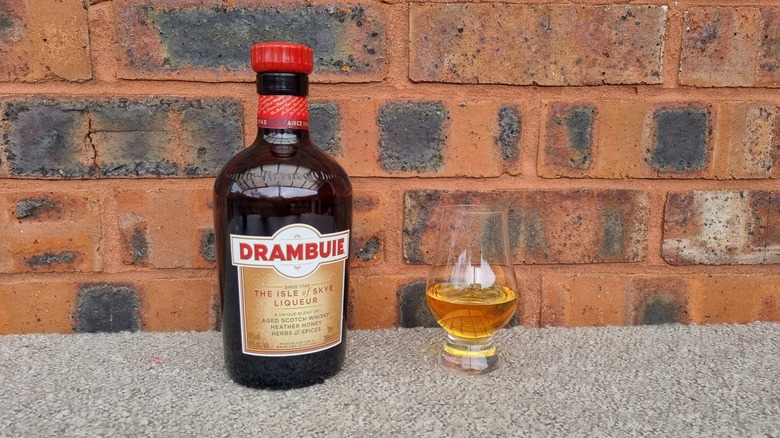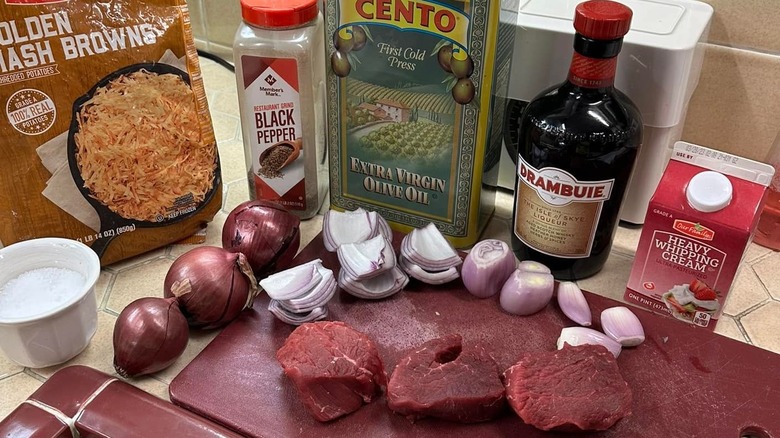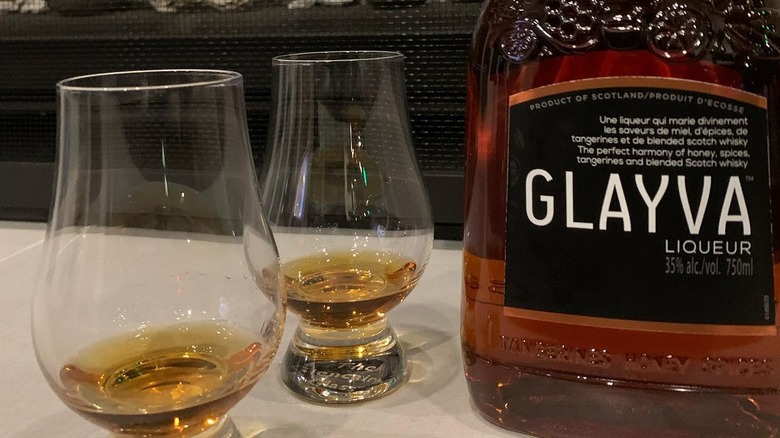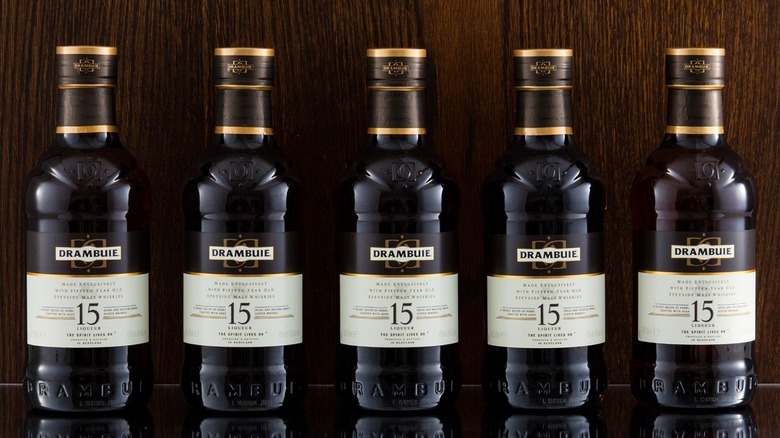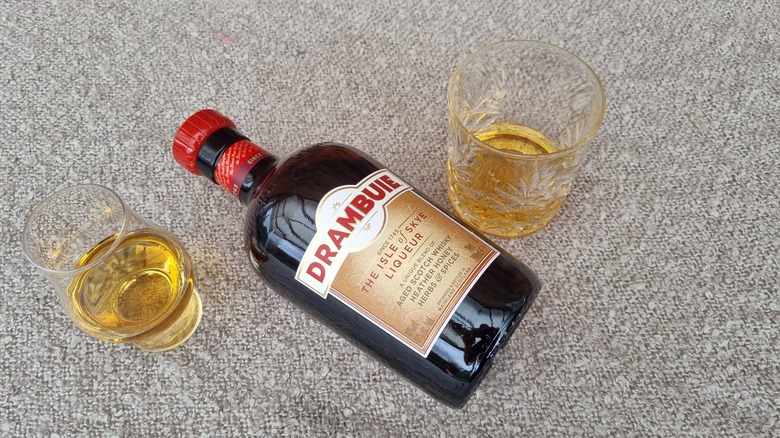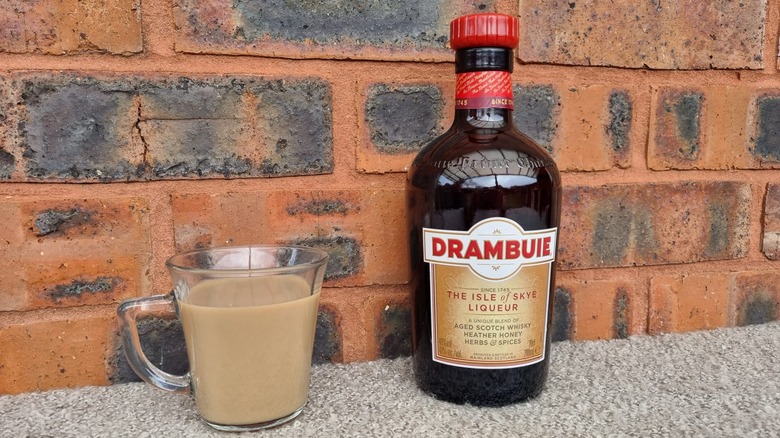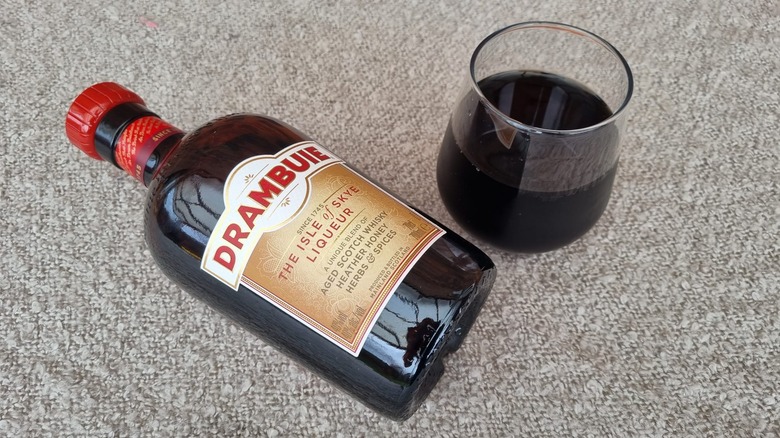Drambuie: The Ultimate Bottle Guide
In the realm of fine liqueurs, few names evoke the same sense of sophistication and respect as Drambuie. With a fascinating history rooted in Scottish heritage, Drambuie is a delicate blend of Scotch whisky along with honey, herbs, and spices. The result of this blend is a unique flavor profile that has developed over centuries of refinement.
Now, many spirits allow you to embark on a journey of history and tradition, and Drambuie is a fantastic example of that. Yet behind the myth and legend of Drambuie is a versatile whisky liqueur — one that's a beloved addition to many a drink cabinet.
In this bottle guide, we cover everything that makes this brand unique. Along with its tasting notes, we'll explore the rich history we've hinted at while giving you all the information you need to determine whether or not a bottle of Drambuie is right for you. Additionally, while we received a bottle of Drambuie courtesy of William Grant & Sons for tasting, rest assured: It did not influence this bottle guide. With that in mind, join us as we delve into the world of Drambuie and touch on why it's become such a popular drink on both sides of the Atlantic.
What is Drambuie?
The first thing to clear up is that Drambuie is not a Scotch whisky. Though it's created with that type of whisky, Drambuie is actually a whisky liqueur. Since whisky liqueurs can be infused with various ingredients that will alter the taste — as opposed to authentic Scotch, which is matured in oak barrels with nothing added to the final product – Drambuie may not be for you if you're looking for a straight whisky.
The infusion of additional flavors may not appeal to whisky purists who like their spirits unadulterated. Then again, this process helps give whisky liqueurs a unique flavor compared to straight whiskies — one that's often significantly sweeter. This provides a more nuanced and indulgent experience and helps explain what makes Drambuie so versatile.
Of course, Drambuie is more than just a whisky liqueur. In fact, as you'll see throughout the remainder of this article, Drambuie is a high-strength drink with a history unlike any other.
Bonnie Prince Charlie and his family recipe
Learning the incredible history of Drambuie starts with knowing what a tincture (or elixir) is. Tinctures are plant or animal extracts soaked in alcohol — and they can be very potent. Centuries ago, drops of these elixirs were often added to drinks to make them more palatable. One man who carried a family recipe with him was Bonnie Prince Charlie.
Born Charles Edward Stuart, he was the grandson of King James (II of England and VII of Scotland). After his grandfather was exiled to France on religious grounds, the prince became a central figure in the Jacobite Rising of 1745. Very succinctly, this was Bonnie Prince Charlie's attempt to restore his family's name to the throne. Since the Scottish were more supportive of his cause than the English, he started his campaign by landing on their shores. After his attempted revolution failed, he sought refuge in the Scottish Highlands until he could return to France — with his whereabouts kept from English pursuers at great cost.
The legend goes that Bonnie Prince Charlie gave John MacKinnon (the leader of Clan MacKinnon) his special recipe as a thank you to those who kept him safe. The prince would live out the remaining 20 years of his life in mainland Europe. Still, his legacy became timeless not only for his attempts to restore his family to the throne but also for setting in motion the drink that would become Drambuie.
Clan MacKinnon passes the recipe to the Ross family
As with Bonnie Prince Charlie, historians could write whole books on Clan MacKinnon without mentioning Drambuie. The clan's custodianship of the drink is a mere footnote in their history — but it's the footnote we're most interested in.
Although the legend goes that the prince gave John MacKinnon the recipe, others have suggested that a French officer or the prince's physician handed over the recipe. Of course, this doesn't change the story too much. The clan were custodians of it and passed it through generations for more than 150 years. In the late 19th century, a senior member of the MacKinnon clan gave the recipe to Broadford Hotel owner John Ross. When his son, James, took over the hotel, he fine-tuned the recipe with his wife, Eleanor.
Adding a syrup of honey, sugar, and glycerin, they served it to friends and guests before selling it commercially from their hotel. The drink earned its name during this period when one guest described it as "an dram buidheach" — which means "the drink that satisfies" in Gaelic. Using the anglicized version of "Drambuie" to name the drink, it was trademarked in 1893.
The other MacKinnon emerges in the 20th century
After James passed away in 1902, Eleanor continued running the hotel for some time before moving to Edinburgh. While there, the family received an offer from a young man called Malcolm MacKinnon to add the Scotch and sell the drink — though in a fascinating coincidence, Malcolm had no ties to the famous MacKinnon clan. In 1912, Macbeth & Sons bought the recipe from the Ross family, but by 1914, it was back in Malcolm MacKinnon's hands as the company had run into financial trouble.
Malcolm MacKinnon (along with his wife Gina Davidson) quickly worked to make and market the liqueur. Their efforts were so effective that the drink started being supplied to the House of Lords in 1916. Though Malcolm died in 1945, with the help of his siblings and children, the business stayed in the family, with Gina becoming chairman in the 1960s. The drink stayed in the family's hands through Malcolm and Gina's children and grandchildren until it was time to let another family take the helm.
It was sold to William Grant & Sons in 2014
In 2014, Drambuie went through its first change of ownership in 100 years. The MacKinnon family decided it was time to pass over the secrets of Drambuie, and it was bought by another family-owned company, William Grant & Sons. The deal reportedly cost around $160 million dollars – a number that was never officially confirmed or denied. Founded in 1887 by William Grant, the once-small family business has grown into one of the most influential players in the world of whisky. In many ways, it was a good fit for a brand that's always had strong links with family ownership.
William Grant & Sons have created an illustrious portfolio of spirits and its range of popular Scotch whiskies includes Grant's as well as Glenfiddich, Monkey Shoulder, and The Balvenie. Additionally, it owns other famous spirits such as Hendrick's gin and Sailor Jerry rum. The acquisition was a strategic move for the company, allowing it to tap into demand for premium liqueurs and cocktails.
How is Drambuie made?
Drambuie is meticulously crafted to combine rich ingredients with great Scotch. As with most blended whiskies, no one can say for sure which spirits are used for the blend (or the precise recipe used to make it). Either way, the exact blend gives the whole drink a foundation and robust backbone.
Given there's a standard process for making whisky liqueurs once you have Scotch, we can at least infer the likely production method for Drambuie. The first stage generally involves soaking plant-based ingredients in a base spirit, before adding them to additional spirits. After this is distilled (in a similar manner to more traditional whiskies), you'll be left with a clear liquid infused with Drambuie's secret herbs and spices.
The sugary syrup is made next and then mixed with the distilled spirit to create the final blend of ingredients. Depending on the brand, this can be bottled immediately or matured for extended aging. While it's unlikely you have your own still at home, you can attempt to make your own whisky infusions at home to see if you can create a similar version of Drambuie.
What does Drambuie taste like?
Drambuie liqueur has a pleasant mix of smells and tastes. The nose is a beautiful array of aromas, with the most dominant being the honeyed whisky that serves as the foundation from which all the other tastes and smells come. The herbal side of the drink — especially heather and dried hay — is easy to appreciate. Where the aroma truly shines is in the spices. Accents of cloves and cinnamon are present, along with the most expensive spice in the world, saffron. It's a smell Drambuie lovers will never get tired of, and you can notice the aroma even when added to cocktails or mixers.
Once it has greeted your nose, Drambuie gives you a compelling blend of flavors. On the first sip, the liqueur unveils an intense sweetness, which is dominated by golden honey. Its smooth texture almost hides the fact that this has a high proof as far as liqueurs go. However, that sweetness is quickly balanced by the robust character of the Scotch, which gives you a warm and smoky undertone.
As the layers unfold, the spice emerges to give it a renewed depth — one ably supported by the herbs. Those spices easily cut through anything you may add to Drambuie and give it a long and lingering finish. The honey ebbs away, but the spice stays until the end. It is undoubtedly a captivating blend.
It's perfect for recipes
Many liqueurs, including Drambuie, can make a unique addition to various cocktails. But Drambuie's versatile and complex flavor profile also makes it an ideal ingredient for food-based recipes. Whether you're making a sweet or savory dish, the drink can help elevate a wide range of recipes with its rich and nuanced taste. Drambuie is known for keeping its recipe a secret, and with a little experimentation? It may become the secret ingredient that makes your dishes stand out from the crowd.
The brand has teamed up with famous British chef James Martin and devised numerous recipe ideas you can try. For sweet treats such as desserts and baked goods, it adds a deep touch of honeyed sweetness and subtle herbal notes. Of course, Drambuie can also be a fantastic addition to savory dishes, and it especially shines when added to marinades and glazes.
Here, it provides an aromatic character to the final finish, whether on meat, vegetables, or both. It's equally great brushed over grilled salmon or incorporated into a tangy barbecue sauce. Plus, since whisky fully cooks out of alcohol within minutes, you'll get all the flavor without it being too boozy.
Drambuie vs. Glayva
One of Drambuie's closest competitors in the whisky liqueur market is Glayva. The two share many similarities, as both have a foundation of Scotch whisky infused with herbs, spices, and sweeteners. However, nuanced differences between each offer unique tasting experiences for discerning palates.
Drambuie has a velvety mouthfeel, but Glayva takes that to the next level with its exceptional smoothness. Glayva has a more mellowed sweetness on the palate, as well, and the taste of honey isn't as intense, with vanilla being the more dominant flavor. The other notable taste difference is that you get more nuttiness with the Glayva liqueur.
So: Which is better? That depends on what you're looking for. Drambuie has a higher alcohol content (80-proof compared to 70 for Glayva), meaning the Scotch has much more influence on the taste. We personally loved the more robust complexity of Drambuie along with its versatility — for example, Drambuie tastes better in a coffee. At the same time, there's no doubt many others would prefer Glayva for its creamier texture. Simply put, if you love whisky liqueurs, both deserve a place in your liquor cabinet.
Drambuie vs. Drambuie 15-year
The Drambuie 15-year presents a refined and elevated version of the classic liqueur. As the name suggests, its been made with the same Drambuie ingredients but infused with whisky at least 15 years old. This gives it a deeper and more nuanced tasting experience compared to its standard counterpart (though these differences aren't vast). Another significant difference is that a smaller amount of sugar syrup is used, so it's not quite as intensely sweet as standard Drambuie.
For most, the difference in syrup will be more significant than the change in Scotch used. First, those who find whisky liqueurs a little too sickly for their liking will appreciate the lower syrup level. Additionally, the less-dominant sweetness opens up more notes on the palate of malt and smoke that you commonly find with mature whiskies. There is little doubt the 15-year version is a much better drink when taken neat due to its more well-rounded profile.
However, it doesn't have the versatility of its younger sibling. While Drambuie 15-year retains the essence of its classic counterpart, it offers a distinctively premium experience. In contrast, the cheaper Drambuie is still a great drink that may be more suited to those who prefer its intense sweetness or simply want a great base for their cocktails.
Is Drambuie expensive?
Drambuie occupies a comfortable middle ground when it comes to the pricing of spirits. With an average price of around $40 for a 750-milliliter bottle, it balances quality and affordability. While not classed as a budget whisky liqueur, its price makes it accessible to a wide range of customers.
It's also worth noting the proof of Drambuie. Being 80-proof, it's around the same mark as many standard Scotches rather than liqueurs. Many other liqueurs hover around the 40-proof mark, after all. With this in mind, you're not only getting an affordable drink with Drambuie but one that gives you good value for the alcohol content. This proof makes it a flavorful alternative to traditional whiskies, as well. Compared to the hefty price tag you have to pay for many single malts, Drambuie is an attractive option for those who want a luxurious taste without breaking the bank.
Furthermore, the flexibility of Drambuie adds to its appeal. Given it can be enjoyed in many ways, this isn't a bottle that will get dusty on the shelf of your home bar. While it may not be in a budget spirit, it's recommended for anyone looking to indulge in a flavorful drinking experience without overspending.
How to drink Drambuie
The rich and complex flavor profile of Drambuie offers a versatile drinking experience that can be enjoyed in a variety of ways. Depending on your preference or the occasion, it can be sipped neat, mixed into cocktails, or even added to coffee. For those who prefer to savor Drambuie on its own, serving it neat or over ice allows you to truly appreciate it. We'd recommend trying it this way at least once to see how the whisky and its infusions blend together. It's a combination that provides a warming drink, great for unwinding after a long day.
Of course, most would say it's in cocktails that Drambuie shines brightest. Creations such as the Rusty Nail were specifically created with Drambuie in mind, though it's worth experimenting by adding it to any cocktail that requires dark liquor. The sweet and spicy notes add depth to any mixed drink, enhancing the overall drinking experience.
We love Drambuie in a coffee, as well, especially if you're looking for a boost of energy before (or during) a night out. We've detailed a few options here, but realistically? Drambuie can be enjoyed however you like. Try out a few different methods — you just may find your new favorite drink.
Methodology
The opinions expressed in this bottle guide are my own personal thoughts based on my tasting experience. I also consulted with family and friends and asked how they prefer to drink Drambuie. The history comes from in-depth and fact-checked research from a wide variety of sources.
While we were kindly sent a bottle of Drambuie from the brand's owner (William Grant & Sons), the opinions within the article are genuine, honest, and in no way influenced by this. Given our impartial assessment and detailed research, we hope the result is a bottle guide you both enjoyed and can trust.
